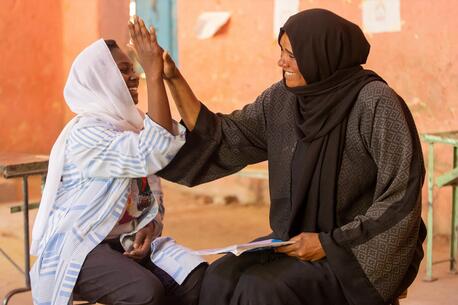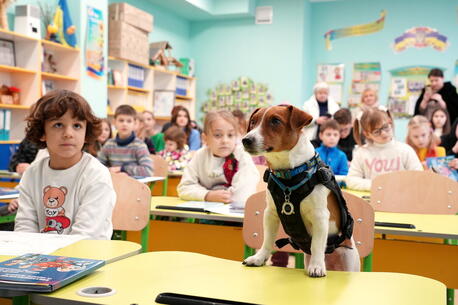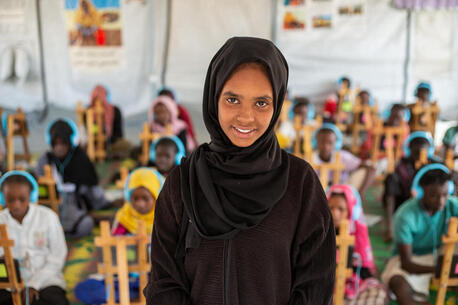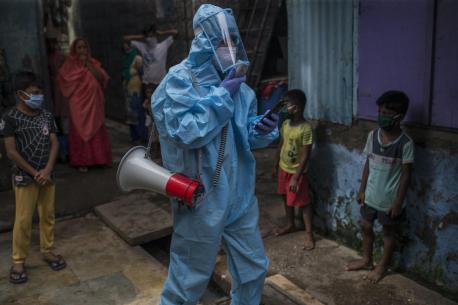
2020 Recap: UNICEF's Actions for Children in Crisis
As the COVID-19 pandemic raged and other emergencies flared, UNICEF and partners were there — working nonstop to save, protect and improve the lives of vulnerable children and families all around the world. A look back at UNICEF's impact this year.
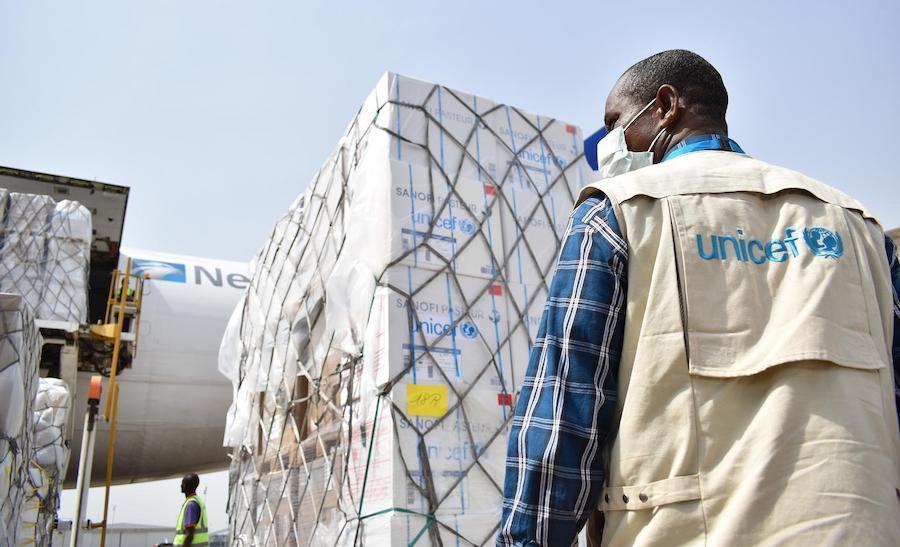
© UNICEF/UNI322101
Shipping personal protective equipment (PPE) and other critical supplies to meet urgent needs in early days of COVID-19
Above, a planeload of vital supplies lands in Nigeria. Even before the World Health Organization declared COVID-19 a global health emergency, UNICEF rushed six metric tons of medical supplies to the front lines. To date, UNICEF has delivered tens of millions of protective items for health workers, medical equipment and hygiene gear. Key to UNICEF's effectiveness is its humanitarian warehouse in Copenhagen, the world's largest, which can ship emergency supplies anywhere in the world in 48 to 72 hours.
As the global leader for procurement and delivery for the COVID-19 vaccine launch in 92 lower- and middle-income countries on behalf of the COVAX Facility, UNICEF is working with airlines and the wider logistics industry to ensure a smooth roll out. By the end of 2021, UNICEF aims to have delivered at least 2 billion coronavirus vaccine doses, 245 million therapeutics and 500 million diagnostic test kits. UNICEF is also helping countries strengthen their systems for cold chain vaccine storage and distribution, providing solar-powered refrigerators in areas where electrical power is not available or reliable.
"This is a mammoth and historic undertaking," said UNICEF Executive Director Henrietta Fore. "The scale of the task is daunting, and the stakes have never been higher, but we are ready to take this on."
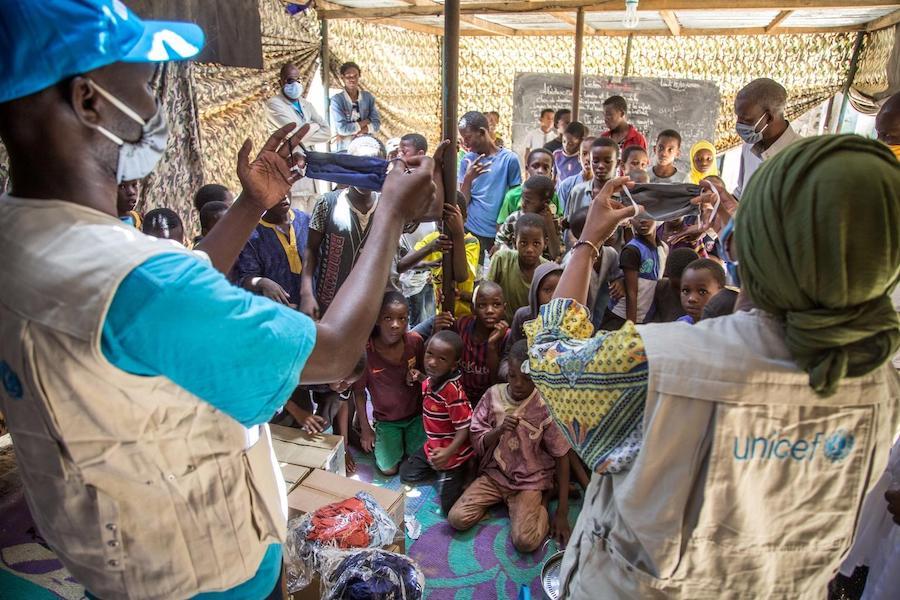
© UNICEF/UNI350999/Pouget
Arming vulnerable communities against the virus
Above, UNICEF protection and communication specialists explain to children in Nauakchott, Mauritania, how to wear face masks correctly to prevent the spread of COVID-19. UNICEF's ongoing efforts to raise awareness of the risks of contracting the new coronavirus and teach best practices for containing its spread are a major pillar of its $1.6 billion pandemic response currently deployed across 63 focus countries. UNICEF has already helped reach more than 2.5 billion people with COVID-19 prevention messaging.
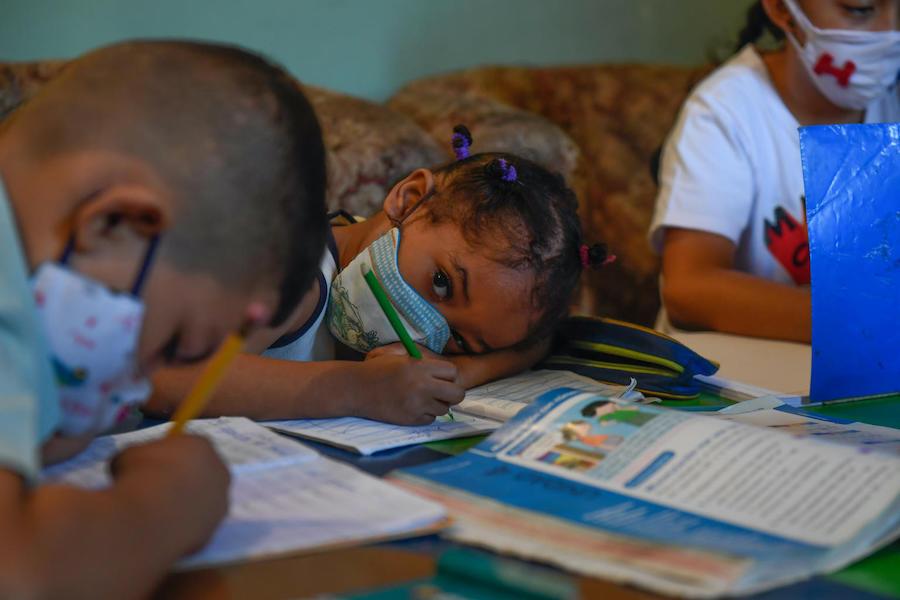
© UNICEF/UNI377012/Parra/AFP
Keeping kids learning during the pandemic
Above, children gather in an improvised classroom inside a home in the Petare slum in Caracas. When COVID-19 prompted schools to close in 186 countries — disrupting the education of some 1.3 billion students — UNICEF focused on finding ways to help children keep learning through online classes and radio broadcasts, among other methods. UNICEF continues to work closely with ministries of education and other partners to provide high-quality remote learning and prioritize the safe reopening of schools. To date, 229 million children have been supported with distance/home-based learning and nearly 66 million children, parents and caregivers have been provided with community-based mental health and psychosocial support.
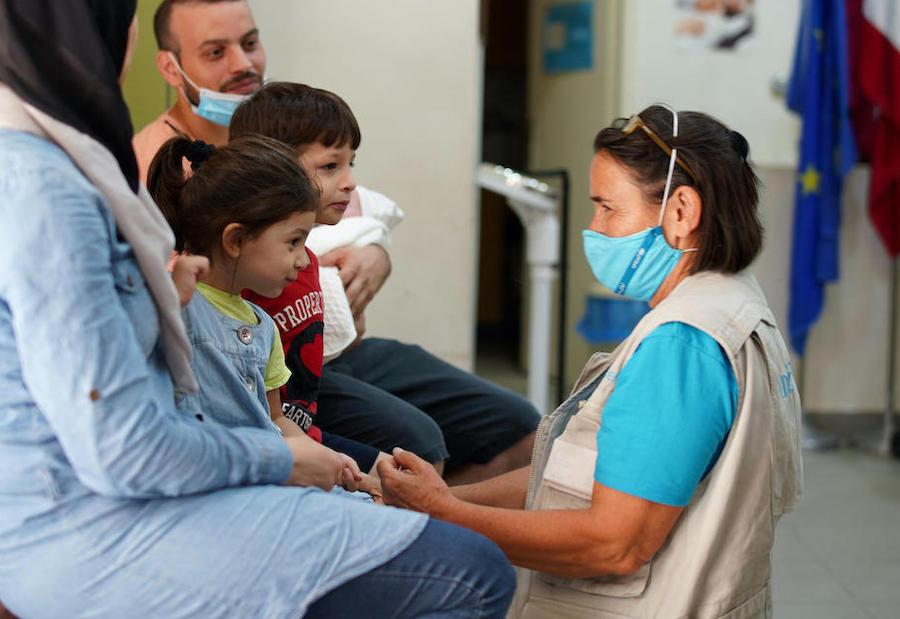
© UNICEF/UNI363575
Bolstering Beirut's recovery from a deadly port explosion
Above, a UNICEF doctor provides care and comfort to a family affected by the blast that destroyed the Port of Beirut, killing 180 and injuring at least 6,500, including 1,000 children. Some 300,000 people were left homeless when a warehouse full of fireworks, kerosene and ammonium nitrate detonated on Aug. 4, directly affecting 100,000 children in a country already in distress due to widespread economic strife. UNICEF was on the ground from day one, delivering emergency services and support and assisting with the recovery. As part of these efforts, UNICEF and partners reconnected 155 buildings to public water systems; installed nearly 900 water tanks in damaged households; and reached thousands of children and caregivers with psychosocial support and counseling, among other services.
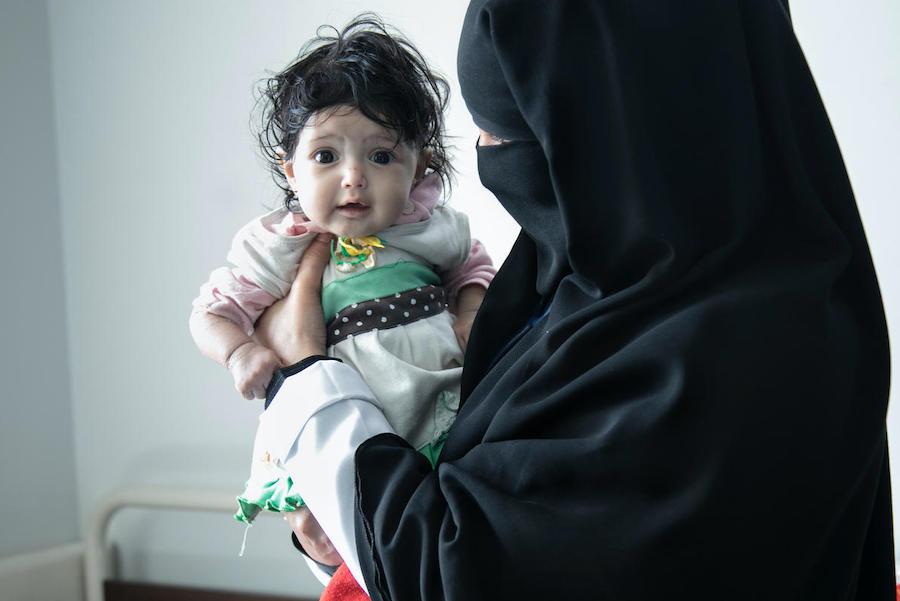
© UNICEF/UNI312476/Alghabri
Alleviating acute malnutrition in Yemen
The levels of deprivation and hardship in Yemen remain unmatched anywhere in the world. After five years of civil war, 24 million people — roughly 80 percent of the population — are in need of humanitarian assistance. The COVID-19 pandemic has only exacerbated their needs. Cases of acute malnutrition have surged to the highest levels since 2015, particularly among children under age 5 in the country's southern region.
UNICEF and partners reached hundreds of thousands of children with life-saving treatment for malnutrition during the first six months of this year, according to situation reports — including six-month-old Diala'a, above, who was treated in February at a UNICEF-supported hospital in Sana'a — but tens of thousands more remain at risk. In October, UNICEF issued an urgent appeal for more funding to scale up nutrition and other programs.
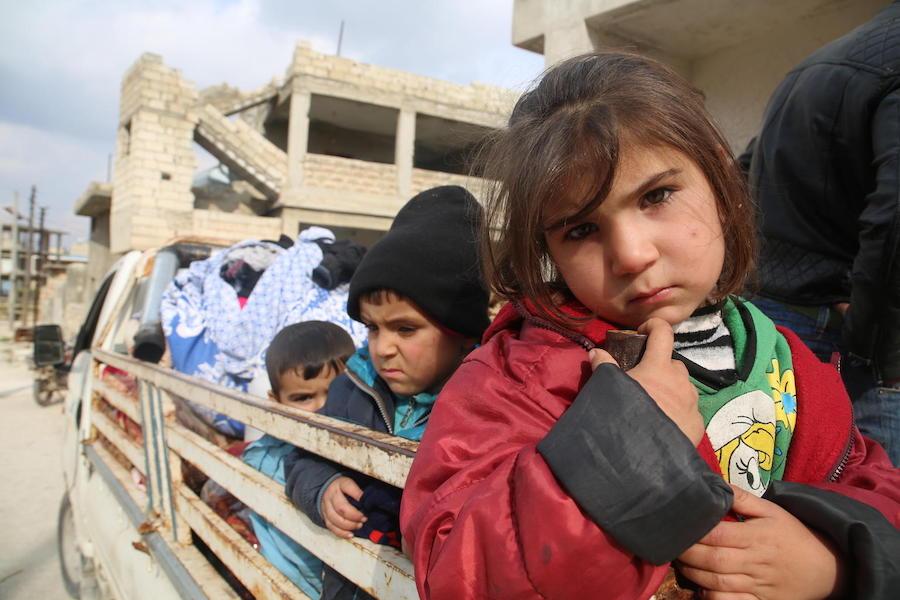
© UNICEF/UNI286347/Abdoullah
Addressing deprivation and displacement in Syria
Above, children ride on the back of a truck heading out of south rural Idlib, northwest Syria, where escalating conflict forced hundreds of thousands of Syrians to flee last winter. Today, more than 1.4 million displaced Syrians live precariously in camps and settlements in the northwest part of the country; 80 percent of them are women and children. Health and safety risks have increased due to unsanitary living conditions and overstretched health and social services.
After nearly a decade of civil war, the situation in Syria remains one of the most significant humanitarian crises of our time, and Syria's children continue to bear the brunt. In 2020, UNICEF and partners continued delivering health care, nutrition, education support and protection to the most vulnerable — reaching millions of children yet still falling short of targets in almost every category due to lack of funding and new logistical challenges created by COVID-19. The strongest results were in health: 2.6 million kids were immunized this year against polio according to a mid-year report.
Over 80 percent of Syrians live below the poverty line. In 2020, UNICEF switched from e-vouchers to unconditional cash transfers to help families meet essential needs and avoid resorting to child labor or child marriage.
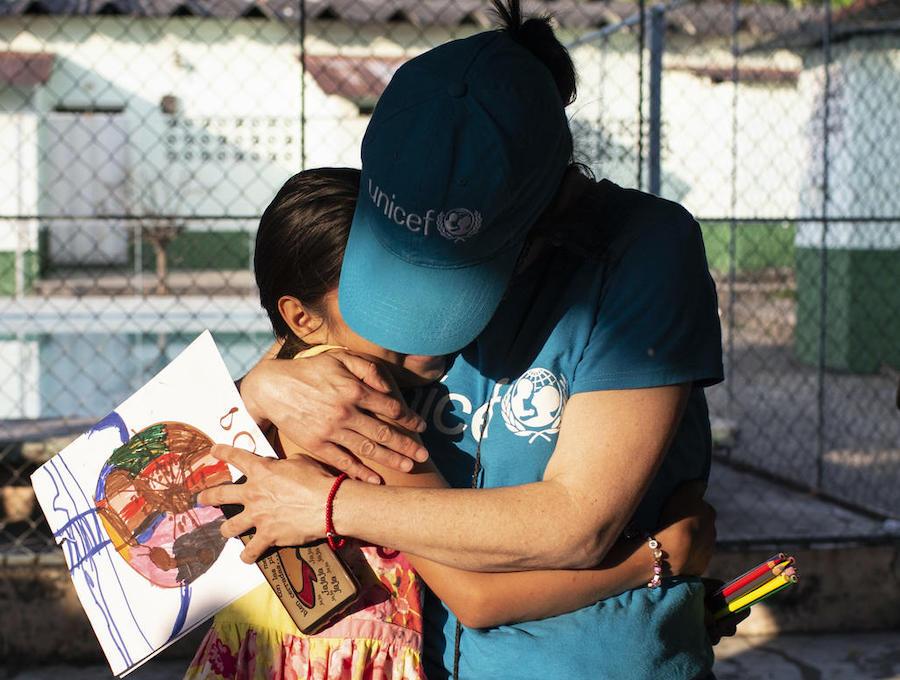
© UNICEF/UN0278768/Bindra
Protecting the rights of Central American child migrants
Each year, thousands of young people — some traveling with their parents, but many unaccompanied — flee El Salvador, Guatemala, Honduras and Mexico for the U.S. Along the way, many fall victim to trafficking, exploitation, violence and abuse at the hands of criminals or security forces. Still, they flee, because gangs have taken over their hometowns, and staying is too dangerous. Staying means living in constant fear.
The COVID-19 pandemic didn't slow migration flows from Central America. It has only made the journeys more treacherous. Since mid-March, more than 8,800 unaccompanied migrant children have been summarily expelled from the U.S. to Mexico and Central America without due process. Migrant shelters along the migration route have become increasingly crowded, and living conditions increasingly unsafe.
To mitigate health and safety risks, UNICEF has been distributing hygiene kits and other vital supplies while also working to identify children in need of protection, and connecting them with case workers and counselors for mental health and psychosocial support, among other services. UNICEF also works directly with governments to increase their capacity to safely quarantine migrant children who are returned and to support their safe reintegration or relocation — making sure their rights are protected every step of the way.
Every year, UNICEF responds to over 300 emergencies — natural and manmade — putting children first. With a presence in over 190 countries and territories, UNICEF has helped save more children's lives than any other humanitarian organization in the world. Help UNICEF deliver for children in need. Please donate.
Top photo: A coordinator for UNICEF’s COVID-19 awareness program is photographed on the job in the Chembur section of M East ward in Mumbai, India, on June 16, 2020. To improve sanitation and reduce health risks in the city's urban slums, UNICEF and partners installed hundreds of pedal-operated hand washing stations in community toilets and elbow-operated taps at schools. Community leaders and school officials are also being trained to manage the new systems long term. The project is expected to reach 150,000 people, including 30,000 children. © UNICEF/UNI347221/Singh
